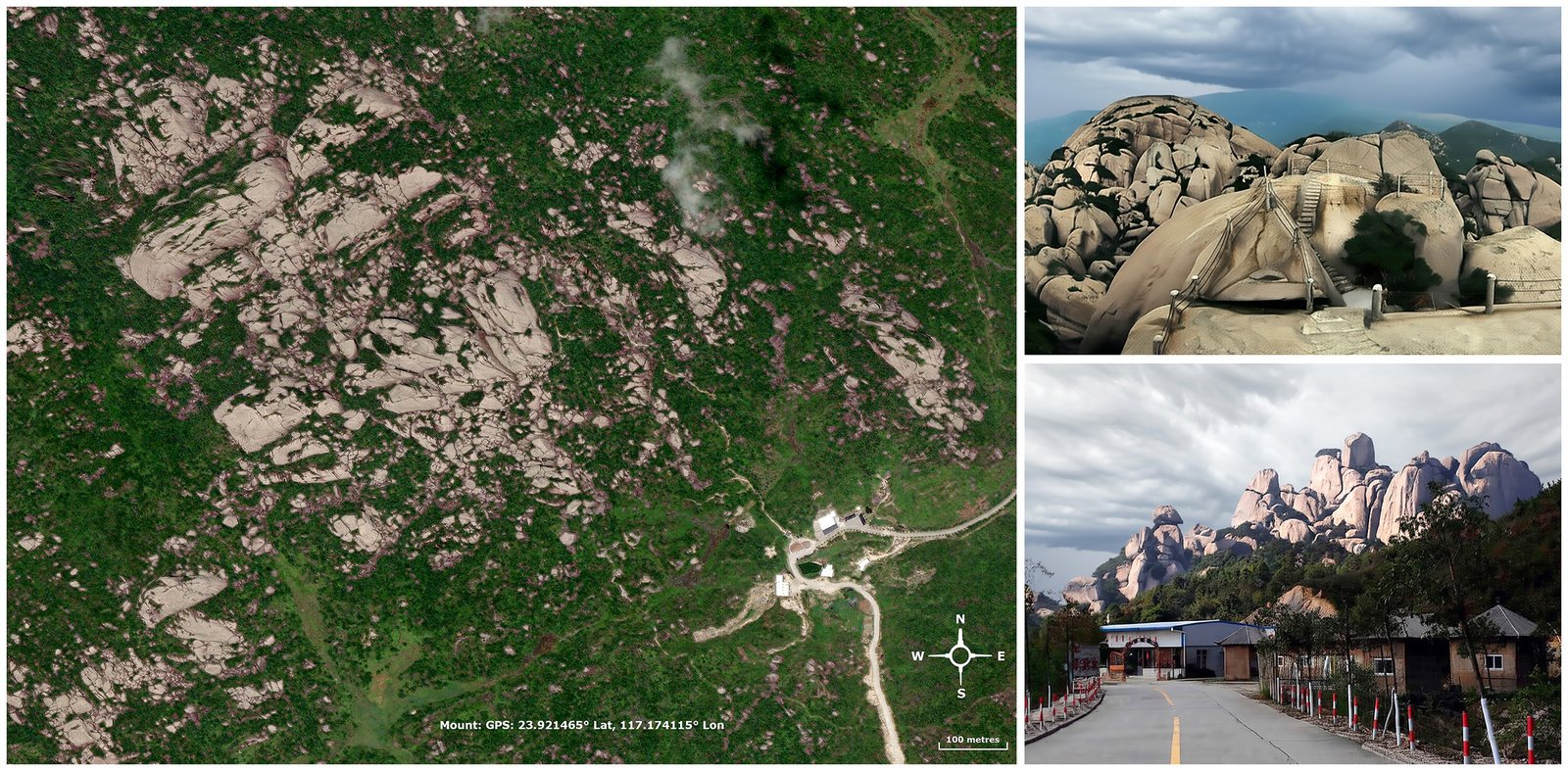Mineral: Spessartine and Smoky Quartz
Locality: Wushan Spessartine prospects, Tongbei, Yunxiao, Zhangzhou Prefecture, Fujian Province, China
Description: Photo 2 – Wu Shan Mountain and Tourist Attraction site
Shown clearly in the aerial photograph is the Wu Shan Mountain, an extensive granite pluton located approximately 1.8 kilometers southwest of Tongbei. It is a site of significant geological interest. The photograph reveals the scope of the pluton, with prominent tourist features such as a scenic walkway and the main entrance — shown in the accompanying photos and clearly discernible in the aerial photograph (Tourist photos courtesy of Chao Li).
The locality is widely known in the mineral trade as the “Wushan Spessartine Mine.” This name, however, is a misnomer. There has never been a formal mining operation dedicated to extracting mineral specimens. Instead, the region's remarkable mineral wealth, particularly its world-class spessartine Garnet and smoky Quartz crystals, was uncovered as a byproduct of commercial quarrying for granite building materials.
A tension between economic activity and natural preservation has redefined access to Wu Shan's resources. The area has been designated a protected national park, and as a result, the collection of mineral specimens is now illegal. Although commercial granite quarrying is still allowed in designated areas, mineral collecting is now forbidden throughout the park.
This shift has significantly increased the value and historical importance of specimens already in circulation. It also poses a challenge for researchers and collectors, who must now study a famed locality through its legacy collections, documenting minerals from a source that, as a “mine” never formally existed and from an area no longer accessible to mineral collectors.
Wu Shan’s distinct mineralogy is directly linked to its geological origin. The pluton's formation is a result of tectonic activity during the Mesozoic Era, specifically the subduction of the Paleo-Pacific Plate beneath the Eurasian continental plate. This process led to the generation and intrusion of large bodies of granitic magma, of which the Wu Shan pluton is a prime example.
The exceptional, well-formed crystals found in the surrounding area are attributed to the presence of late-stage, volatile-rich fluids within the cooling magma. These hydrothermal fluids concentrated incompatible elements and created miarolitic cavities — pockets or voids within the granite — that provided the open space necessary for exceptional, gem-quality crystal growth.


All pictures, text, design © Forum FMF 2006-2025


